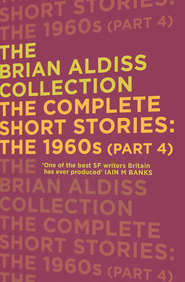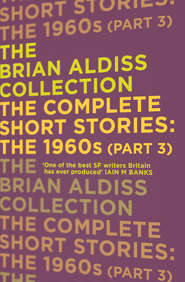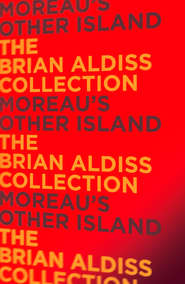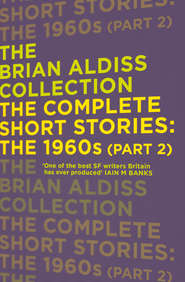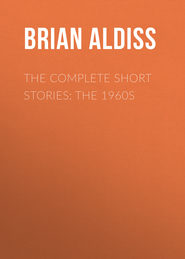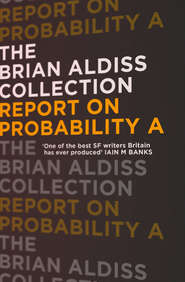По всем вопросам обращайтесь на: info@litportal.ru
(©) 2003-2024.
✖
Collected Essays
Настройки чтения
Размер шрифта
Высота строк
Поля
Address to the British Association for the Advancement of Science
DECADENCE AND DEVELOPMENT
THE VEILED WORLD
A Lecture given to the Oxford Psychotherapy Society
A PERSONAL PARABOLA
Speech delivered at the Natwest Fundación, Madrid
Copyright (#litres_trial_promo)
ACKNOWLEDGEMENTS (#u8bfe6f77-bc5e-5311-8e85-e7b7c87faaab)
This book owes its origins to two volumes published by Serconia Press in 1985 and 1986, The Pale Shadow of Science (hereafter PSS) and … And the Lurid Glare of the Comet (ALGC). The former volume was designed for my appearance as Guest of Honour at Norwescon, Seattle, March 1985. Both were the brainchild of Jerry Kaufman of Serconia Press.
Almost all the original articles have been greatly revised, thrown out, supplemented, or at least tampered with. New articles have been added. Their provenance is as follows:
‘Thanks for Drowning the Ocelot’—as Afterword in Orbit Science Fiction Yearbook Two (1989), edited by David S. Garnett.
‘A Robot Tended Your Remains …’—new.
‘Between Privy and Universe: Aldous Huxley (1894—1963)’—expanded from an article in Nature, August 1994.
‘The Immanent Will Returns—2’—new, but based on ‘Olaf Stapledon’ in The Times Literary Supplement (1983) and the Foreword to Robert Crossley’s Olaf Stapledon: Speaking for the Future (1994).
‘A Whole New Can of Worms’ (PSS, expanded)—published in Foundation (1982).
‘Science Fiction’s Mother Figure’ (PSS, expanded)—developed from ‘Mary Wollstonecraft Shelley’ in Science Fiction Writers (1981), edited by E. F. Bleiler.
‘Sturgeon: The Cruelty of the Gods’ (ALGC, expanded from ‘Sturgeon: Mercury Plus X’)—as an obituary in Isaac Asimov’s Science Fiction Magazine (1986).
‘The Downward Journey: Orwell’s 1984’ (PSS)—in Extrapolation (1984).
‘Peep’ (PSS, expanded)—as Introduction to James Blish’s Quincunx of Time (1983).
‘Culture: Is it Worth Losing Your Balls For? (ALGC, expanded from ‘When the Future Had to Stop’, Vogue, 1986). Plus Introduction to The Alteration (Easton Press ed., 1993).
‘Wells and the Leopard Lady’—lecture given to the International Wells Symposium (1986) and in Parrinder and Rolfe, eds., H. G. Wells Under Revision (1990).
‘The Adjectives of Erich Zann: A Tale of Horror’—new.
‘Jekyll’—new.
‘One Hump or Two’—lecture given at IAFA Conference of the Fantastic #12. Reprinted as ‘Fantasy: US versus UK’ in Damon Knight’s Monad (March 1992).
‘Kafka’s Sister’—Introduction to Brian W. Aldiss, ed., My Madness, The Selected Writings of Anna Kavan’ (1990).
‘Campbell’s Soup’—new, based on a review in SFRA Review (1993).
‘Some Early Men in the Moon’—based on ‘The Raccolta of Filipo Morghen’ in Life on the Moon in 1768 (1990).
‘Kaliyuga, or Utopia at a Bad Time’—a talk given at the annual MENSA meeting, Cambridge, August 1994. Based in part on an article appearing in Locus (1994).
‘The Atheist’s Tragedy Revisited’ (PSS)—revised.
‘The Pale Shadow of Science’ (PSS)—address to the British Association for the Advancement of Science, 1984.
‘Decadence and Development’—new.
‘The Veiled World’—based on a talk given to The Oxford Psychotherapy Society, 1991.
‘A Personal Parabola’—adapted from a speech delivered in Madrid, January 1994.
INTRODUCTION (#u8bfe6f77-bc5e-5311-8e85-e7b7c87faaab)
WARNING: These essays are written by a man who produced his first SF short story at the age of eight. Writing has brought him joy and possibly saved him from a life of crime. The unifying theme here is his belief that all literature is a criticism of life, or someone’s life. Even when that was not the intention behind it.
Among the great range of talented artists working in the SF/fantasy field, the name of Jim Christensen is particularly cherished. Not only is he marvellously inventive, he is a man of great charm and courtesy. And an obsessive.
I watched him during a signing session at a conference in Houston. As people came up to his desk with a book to be autographed, Christensen gave them something extra, something more than the bare signature we novelists extrude. He would swiftly draw beside his name a cameo: a fish, or a boat, or a dwarf, or a boat-fish, or a fish-dwarf-boat, or something entirely new. That’s obsession!
This particular IAFA conference was being held at the Hobby Aiport Hilton Hotel in the mid-eighties. The Conference of the Fantastic is organized by the International Association for the Fantastic in the Arts, for many years under its energetic president, Marshall B. Tymn. Another obsessive.
The term ‘obsessive’ is used in complimentary fashion, since I must clearly be obsessive myself. My involvement with creative writing and criticism and science fiction has led me into the shallows of academia. Being a creative writer and a critic at one and the same time is somewhat convoluted, but I have certainly learnt from the academics.
The two similar writing processes impede but also cross-fertilize each other. I rejoice that it is so, and late in my writing career—if career it is—wish to give grateful thanks to the IAFA, one of the two major bodies to which SF academics belong. The other, and longer-established, body is the SF Research Association.
Before these two well-organized bodies set up shop, a certain amount of chaos reigned. The teaching of science fiction was in its infancy, with no one clear as to what to teach or how. Early SF curricula were described as Utopian Studies, or Futurism in Literature, or went under similar disguises. Most of the thought on the subject could best be described as muddled, though early lecturers on the subject, such as Jack Williamson, Tom Clareson, and Willis E. McNelly were fighting the good fight by dawn’s early light.
In 1971, when my wife and I were staying in California with Harry Harrison and his wife, I was called upon to lecture at the J. Harvey Mudd College. SF had become all the rage as a degree option, and unqualified persons were being coerced into teaching courses for which they were ill-prepared.
A woman came to me in distress. ‘I was due to hold a course on Dryden’, she said. ‘But no one enlisted. It was cancelled yesterday. Now I have to teach Science Fiction. Can you tell me anything about a writer called Robert Heinlein?’
Billion Year Spree was devised to attend to such problems. My hope was, by a little clarity of thought, to supersede some of the sillier theories of SF then floating about, and by so doing to focus on the intrinsic nature of the beast. Also, of course, I wanted to write of SF from my own experience as writer and reader with a half-lifetime’s enjoyment behind him. While preserving as much detachment as I could muster.
The IAFA—I hope I have this right—was founded in the late seventies, by the revered Dr Robert A. Collins of the Florida Atlantic University, among others. Their first conference was held in Boca Raton, Florida, at the University, in 1979—a year after the SFRA presented me with a Pilgrim Award for Distinguished Contributions to Science Fiction. Dr Collins invited me to the third conference (referred to in the Sturgeon chapter). Since then I have attended all conferences bar two, and have attained the valued status of Special Permanent Guest.
The conference moved to Houston in the eighties, and is now (1994) convened in Fort Lauderdale, Florida. It has become the most pleasurable event of the SF year. I owe a great debt of gratitude to the executive board, whose skills I view with awe. This annual plunge into the rather hard-pressed academic world of American scholarship acts like a refresher course, while the continuity of the relationship, with all its challenges, is invaluable.
The board invited me in the first place because of the SFRA precedent, and also because I was one of the few writers actively to support the idea of academic criticism and study. In England, by contrast, there seemed to be only one lone scholar of SF, the feisty Tom Shippey, and in Scotland Colin Manlove. If SF is to be a literature, clearly the scholarly side must thrive. Nowadays, others writers, such as Joe Haldeman, John Kessel, Jane Yolen, Tom Maddox, and Stephen Donaldson, and of course Frederik Pohl and his wife, Betty Anne Hull, write and teach. And attend the IAFA conferences. Veteran editors such as David Hartwell and Charles Brown are generally present, to remind scholars that SF also has to be lived right down to the toenails. Writers as diverse as Doris Lessing, John Barth, Stephen King, Leslie Fiedler, and Richard Ellman have proved successful and popular visitors.
In the nineties, science fiction has spread into media other than the printed word. Into movies and videos, and into all the ramifications of the still proliferating electronic world, towards that digital time in the twenty-first century when the entire globe is on Internet and we all have access to everything.
Billion Year Spree proved an asset to scholars. It gave them carte blanche not to have to study texts a million miles from the real thing unless they wished; they were not forced to lead their students through Gilgamesh or Dante; they could narrow their sights on Frankenstein and all the amazements which have poured forth since. That proved good news for all concerned.
Billion Year Spree delivered a dialectic in which SF could be studied as a literature dealing with mankind’s attempts to come to terms with new powers and to overcome those aspects of nature reckoned to be impediments to progress.






